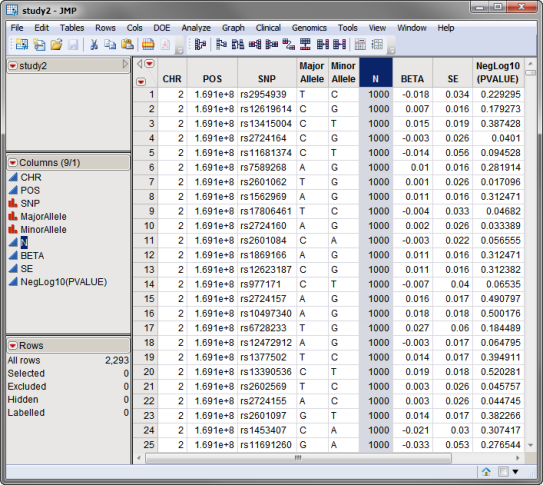Process Description
GWAS Meta-Analysis
This process performs a meta-analysis of genome-wide association studies by combining P-values or effects for a particular test from multiple studies and calculating a combined p-value or effect.
Results can be combined using one of three methods:
The first and second methods weight effects, such as regression coefficients or log odds ratios, from the studies by the inverse variance, calculated as the inverse square of the Standard Error Variable , and calculate a z-score based on the weighted combined effect and its standard error.
| • | When the random effects model is selected, the weights include an estimate of the between-study variance (DerSimonian and Laird, 1986). |
| • | The fixed effect model assumes that this variance is 0. When either inverse variance method is selected, a forest plot is displayed and also heterogeneity statistics are included in the output to indicate which model is appropriate. |
The third method uses p-values from the studies, converts them to z-scores and then combines the z-scores signed by the selected Effect Variable and weighted by the square root of the sample size (Stouffer et al., 1949).
There should be one data set containing p-values, effects, or both, for each study.
Note: Variable on the General tab can be selected for the first specified study, and if any other study uses different variable names, the names for all studies after the first must be specified on the Other Variable Names tab.
What do I need?
One data set containing p-values, effects, or both, for each of the studies to be analyzed is required to run this process. All of the data sets must be located in the same folder.
You must specify the variables to be included in the analysis. Variables for the first specified study are selected on the General tab. Variable names in the additional studies are assumed to be the same. However, if any other study uses variable names that differ from those in the first study, you can specify these additional names on the Other Variable Names tab.
For example, the ID, effect, and p-value variables are named SNP, BETA, and NegLog10(PValue), respectively, in both the study1.sas7bdat and study2.sas7bdat data sets shown below. The variables can be specified on the General tab.


The Sample Size variable (highlighted in the figures above) is named differently in the two data sets. The sample size variable name for study1 (SampleSize) is specified in the Sample Size Variable field on the General tab, whereas the sample size variable name for study2 is specified in the Other Sample Size Variables field on the Other Variable Names tab.
For detailed information about the files and data sets used or created by JMP Genomics software, see Files and Data Sets.
Output/Results
The output generated by this process is summarized in a Tabbed report. Refer to the GWAS Meta-Analysis output documentation for detailed descriptions and guides to interpreting your results.